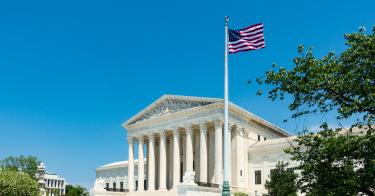In Gamble v. United States, Supreme Court Justice Clarence Thomas wrote a concurring opinion to “address the proper role of stare decisis,” the idea that the court should generally follow its prior decisions. The hysterical response to this opinion suggests he may just be onto something.
For example, ThinkProgress columnist Ian Millhiser accused Thomas of wanting to “burn down the very idea that courts should obey precedent.” The rule Thomas articulated, Millhiser wrote, “would give his court free reign [sic] to burn down any decision that five of its members do not like.”
No one who actually read Thomas’ concurrence could describe it that way. After all, Thomas joined six of his fellow justices in a decision not to overrule precedent. What incensed Millhiser was Thomas’ view that “When faced with a demonstrably erroneous precedent, my rule is simple: We should not follow it.”
The Supreme Law of the Land
This take on precedent, which no doubt sounds like common sense to most people, would not have been considered controversial for most of American history. That alone should suggest who the radicals are today. Rather than wanting to set fire to the rule of law, Thomas simply wants to let the Constitution, the real Constitution, once again be what it claims to be — the supreme law of the land.
Nor do only justices some would label “conservative” hold this view. In 1949, Justice William O. Douglas wrote a Columbia Law Review article stating that “a judge remembers above all else that it is the Constitution which he swore to support and defend, not the gloss which his predecessors may have put on it.” Douglas’ and Thomas’ judicial philosophies differ starkly, but they both recognize that the Constitution and precedents about the Constitution are not the same thing.
The Supreme Court offered another similarly commonsense axiom in its 1803 decision in Marbury v. Madison. “All laws which are repugnant to the Constitution,” wrote Chief Justice John Marshall, “are null and void.” Laws are not constitutional simply because Congress passed them. If shown to be inconsistent with the Constitution, those laws are no longer followed. Thomas applies the same basic principle to the Supreme Court’s precedents.
Unjust Law Is No Law at All
Thomas’s view echoes Martin Luther King Jr.’s view, expressed in “Letter from Birmingham Jail,” that “an unjust law is no law at all.” As a Supreme Court justice, Thomas is duty-bound to uphold the Constitution. He must therefore regard a precedent that is unconstitutional as no precedent at all. Following a past decision simply because it was decided, rather than because it was decided correctly, would make it impossible to correct grievous errors such as Dred Scott v. Sandford or Plessy v. Ferguson.
Even Millhiser concedes that Thomas’ view is reasonable, but he warns readers “to bear in mind that this rule comes from a man who has serious doubts about child labor laws.” Once again, he trips over politics. The only supports Millhiser offers for this claim are his own past articles, which similarly offer no support for the proposition. More importantly, though, Thomas’ view is that judges should adhere to the actual meaning of the Constitution and how it applies to a particular piece of legislation or executive policy, not to whatever their personal views may be about that legislation or policy.
Millhiser asks readers if they want someone like Thomas “to have an unchecked power to decide which decisions are ‘demonstrably erroneous.’” No one should want any part of the government to have “unchecked power,” and, thankfully, Thomas has never even hinted that he does either. He wants judges to be checked more, not less, by abandoning the notion that the Constitution means whatever they say it does.
Besides, Thomas explained that a “demonstrably erroneous decision” is one “that is not a permissible interpretation of the text.” In that case, “the court should correct the error, regardless of whether other factors support overruling the precedent.”
Thomas’ view means the American people and the Constitution they ratified provide the standard for assessing whether judges get their interpretations right. Refusing to abandon a demonstrably erroneous interpretation of that Constitution exalts the Supreme Court over the Constitution and, therefore, over the people. Now that is truly a radical position.
This piece originally appeared in The Federalist




